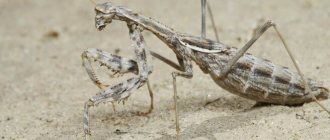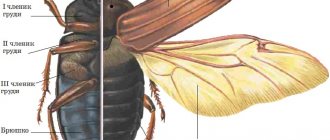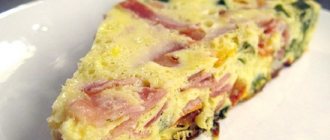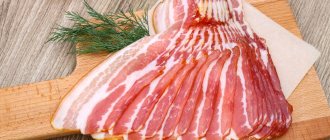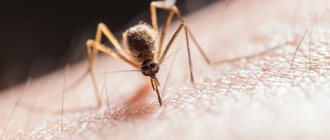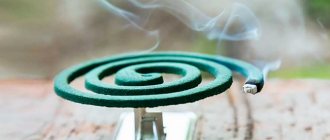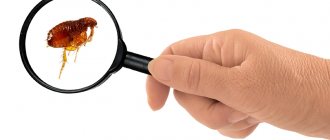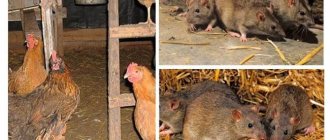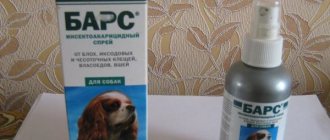Those who often visit nature or the countryside have been stung by bees or wasps at least once. It is often difficult to understand from the bite and the painful tumor that develops from it which insect caused it, the consequences are so similar. Scientists have long been closely studying the effects of wasp and bee venom on the human body.
It is known that wasp venom is more allergenic than bee venom. A bite can cause Quincke's edema and anaphylactic shock. But this is not all that insects with a bright, catchy yellow-black color are capable of. She warns everyone: dangerous!
Note! Only females have poison, and males simply do not have a sting.
What is contained in wasp venom
Each drop of wasp venom contains a wide range of biologically active substances that affect tissues and nerve endings, which necessarily provokes some kind of immune response. No one can predict how the human body will behave in each specific case. For some, such an incident will go almost unnoticed, but for others it can result in very serious consequences.
What is contained in wasp venom
The most famous components of wasp venom:
- Acetylcholine is a substance known as a neurotransmitter, that is, it is involved in the reactions of nerve impulses. If the concentration is high, then the work of the nerve ending can be completely blocked.
- Histamine causes allergies and activates inflammatory processes. Because of it, an itching sensation occurs, and swelling also develops at the site of the wasp bite. In especially dangerous cases of individual intolerance, even 1 bite can cause anaphylactic shock.
- Phospholipases are enzymes that can destroy cell walls, thereby provoking an inflammatory process. The person feels pain at the site of the bite, which will only stop with inflammation. Under the influence of phospholipase, mast cells are also destroyed, which leads to a massive release of histamine into the blood. The allergic reaction increases, in some cases like an avalanche.
- Hyaluronidase is another type of toxin whose effect is similar to that of phospholipase;
- Hyperglycemic factor - responsible for increasing blood sugar levels.
If the bite is made by a hornet (the largest of those, which include poisonous wasps), then its poison contains toxins such as mastoparans, whose destructive effect on cell membranes is several times stronger than that of phospholipase.
The hornet will bite
Signs of a wasp sting
Wasps are quite aggressive insects and often attack without warning or special reason. The main symptoms of a wasp sting are:
- sharp severe pain;
- the appearance of swelling at the site of the bite;
- redness of the skin around the bite.
In most cases, wasp stings are limited only to these symptoms, and the pain disappears after 2-3 hours.
However, approximately 1 in 100 people who are bitten will experience a severe allergic reaction, which can even be fatal. A signal that the life of the bitten person is in danger is the appearance of the following signs :
- severe swelling that increases;
- the appearance of rashes and itching throughout the body;
- nausea and vomiting;
- labored breathing;
- pulse instability;
- dizziness;
- convulsions;
- loss of consciousness.
Wasp bite marks.
Wasp venom - composition
Immediately after the bite, the person feels severe pain and burning. A slight swelling will form at the site of the skin puncture. After a few more minutes, the tumor rapidly spreads to neighboring areas. Severe redness occurs, sometimes with a bluish tint. The tumor may even become hard. Sometimes unbearable subcutaneous itching appears. Typical allergy symptoms often develop:
- Skin rash;
- Temperature increase;
- Rapid breathing;
- Headache and dizziness.
Sports turf: description, mixture composition and characteristics
In the most extreme cases, anaphylactic shock may develop. This is the most severe manifestation of allergies. Occurs in people who are allergic to Hymenoptera venoms. Typically, such a reaction occurs in an allergic person not only to the venom of wasps, but also of bees, hornets, bumblebees, etc.
Important! The speed of development of an allergic reaction is very high; it happens that there is no time to take the victim to the hospital.
It is generally accepted that the likely benefits of using wasp venom are outweighed by the risks that accompany each use. Doctors have to take into account the proven fact: with each subsequent bite, the sensitivity of a given person to the injected poison only increases.
Wasp venom becomes safe and even useful after special processing in the laboratory. Such work is being done to obtain a vaccine that saves the lives of people suffering from allergies to insect bites. The vaccine contains a reduction in the concentration of histamine and some toxins, but the composition of other specific components remains unchanged so that in the future the immune system can identify the injected poison.
Vaccinations are done annually with the onset of the warm season, when the likelihood of encountering wasps increases. By the time this dangerous event occurs under the influence of the vaccine, a person must already have developed an immune response. This is the only way to not be afraid of death from an accidental bite far from hospitals and doctors.
Hospital and doctors
Study of wasp venom is carried out in research laboratories around the world. There is reason to believe that the components of this unique substance can help find a cure for cancer. Not long ago it was discovered that cancer cells are destroyed by wasp venom. This could be a real breakthrough in oncology.
Nutrition
There are also differences in nutrition.
- Vegetarians include bees. They feed only on nectar and plant pollen.
- Wasps need to consume the proteins found in the larvae. They often eat flies and even beetles, which are sometimes larger. First they sting the victim to immobilize them. Then, wrapping their paws around them, they drag them into their nest. They crush weak opponents with their powerful jaws. Can be seen on pieces of rotten meat, fish, carrion. With their strong jaws they tear off small pieces, chew them and give them to their larvae. They love the juice of fresh, rotten fruits, vegetables, and berries. They love to enjoy sweet drinks, beer, and jam.
How else are these insects different? Being aggressive, wasps can enter the hive to snack on protein food. Although the owners of the hive actively defend themselves, they can expel uninvited guests out.
Bee and wasp venom - the difference between them
Composition of honey
The bee and the wasp only belong to one species: stalked-bellied insects, but there are many differences between them. The most important thing is that a bee can only bite once, after which it always dies. A wasp can bite repeatedly without suffering at all. The behavior of bees is less aggressive; they can calmly react to the presence of a person near the hives. The wasp protects the nest by attacking the enemy, regardless of its size.
An insect can mistake a wave of a hand, and sometimes even the smell emanating from a person, for aggression. If something provokes aggression, then all nearby wasps will attack at once, stinging the enemy until the poison runs out, and sometimes even after that. The bite of wasps is very painful, and they can also bite not only with their stings, but also with their jaws.
Wasp jaw
The wasp's sting is smooth, like a needle. It pierces the skin easily and does not get stuck. The wasp sticks its sting into the skin, flies up and attacks the person again. It's not harmful to her at all. If the individual is large enough, then one bite is enough to cause the most negative consequences. A large amount of poison can cause cardiac arrest even in a healthy person.
Bee venom has a different composition of components than aspen venom. The following groups are distinguished:
- Proteins with enzyme properties. The most famous is phospholipase A2. Its concentration in the poison reaches 14%. In addition, there is a small amount of acid phosphatase and hyaluronidase, which accounts for no more than 3%.
- Toxic polypeptides. Melitin is the most abundant - its concentration reaches 50%. This group also includes histamine-containing peptides, but their concentration is very low.
- Biogenic amines. These are substances such as norepinephrine and dopamine, as well as histamine. In large quantities, they have a strong effect on the functioning of the heart.
Biogenic amines
It should be noted that the composition of bee venom is not a constant value, changing every day of its life. It depends entirely on the age of the insect. It is known that histamine agents reach their highest concentration on the 35-40th day of a bee’s life. The composition of wasp venom is more stable and less dependent on age. The size of the insect is decisive; the larger it is, the more poison it has, the more dangerous it is.
Appearance
Both species of stinging insects belong to the order Hymenoptera. It is not possible to determine who is bigger at first glance. Bees appear thicker due to their thick hairs. You can tell a wasp from a bee by their appearance.
The main difference is the color:
- Bee color: the body is painted in a more modest yellow tone, intersected by blurry dark stripes. Paws are dark in color. The body is rounded, covered with thick hairs, and the girdle between parts of the body is almost invisible. The abdomen differs in shape, depending on its role in the hive. In workers who collect nectar, it is ovoid. In queens it is oblong. The drones have a body that seems to be truncated and larger than that of an ordinary inhabitant of the hive. The bee's legs are equipped with baskets for storing flower nectar and pollen.
- The wasp looks more elegant. Its abdomen, head and paws are smooth, painted in a deep yellow color, which is clearly separated by a dark pattern. And the abdomen and chest are sharply separated by a narrow belt. The body is elongated. During examination, you can distinguish strong jaws and thin legs.
What is the venom of the Brazilian wasp?
Lawn grass Lilliput: description, composition and characteristics
Brazilian wasps are not rare; they are quite common in their natural habitat. They are classified as paper, public. They settle in nests of up to 1000 individuals. Using their saliva, mixing it with wood dust, they build nests, the walls of which most closely resemble paper. The structure of the colony is as follows: the queen and males are capable of reproduction, but do not leave the nest. The protection of the nest, its construction, and feeding are carried out by female workers, who are not capable of reproduction, but are capable of stinging.
It is the Brazilian wasps (Polybia paulista) that have become known to the whole world thanks to recent scientific research in the USA. It was possible to establish that the venom of these insects is capable of destroying cancer cells. It's all about a unique peptide - Polybia-MP1. However, we are not talking about a panacea for all types of cancer, only for some. Moreover, the drug being developed, based on the venom of the Brazilian wasp, has been tested only on mice.
Lifestyle
Insects also differ in their lifestyle:
- The flight of a bee is soft and leisurely. The nectar collector needs to visit many flowers without missing a single one. The wasp flies rapidly, at high speed, but can freeze in the air for a moment;
- All insects prefer to live in families, which mainly consist of ordinary workers, one queen and drones.
Domestication and Taming:
- Man made comfortable hives for domestic bees. Working individuals produce wax from which they build honeycombs;
- Wild individuals make their nests in tree cavities and mountain crevices.
Wasps also live in groups, where responsibilities are clearly distributed between them. Sometimes they prefer to live as hermits. Their nest is round, as if made of thin crumpled paper. In fact, they prepare it from rotten wood and dry plants.
Dirt and small debris are used to build the nest. They attach their nests to the walls of a house, large tree branches, thick grass, even in a thick plant stem, a discarded mitten, or a piece of cardboard.
How to neutralize wasp venom
How to neutralize wasp venom
When a bite does occur, but it is not known in advance how a person will react to the wasp’s venom, you should act very quickly. First of all, it is important to remember what you should never do, namely:
- Drink alcohol, as alcohol accelerates the absorption of poison into the blood;
- Cool the bite with water from a nearby pond or earth, clay, as you can get a dangerous infection, including tetanus;
- Press on the bite, as this helps spread the poison;
- Kill the insect, as this releases odorous substances into the air, notifying all nearby wasps about the attack. As a result, instead of one insect, a whole swarm can attack at once.
To disinfect a bite use:
- Alcohol;
- Hydrogen peroxide;
- Alcohol tinctures of calendula, propolis, etc.;
- A weak solution of potassium permanganate;
- Ammonia.
The following will help reduce intoxication:
- Antihistamines: Suprastin, Loratadine, etc.;
- A cooling compress of ammonia or ice.
Important! In case of multiple bites, you should call an ambulance, since it is impossible to predict the body’s reaction to a large dose of wasp venom.
So, what you shouldn’t do if you’ve been bitten by a wasp is panic. You need to act quickly and try to get to the hospital as soon as possible. If we are talking about an allergy sufferer or a child, then it is better to immediately give medicine for the allergy. Wasp venom should not be used as a cure for any disease.
0 0 votes
Article rating
Relation to the uterus
The queen of a bee colony is the main individual. Beekeepers call her the queen or queen bee. All the inhabitants of the hive always take care of her, surround her with a retinue, give her food and drink, and protect her in case of danger. The queen stays in the hive all the time, flying out only to mate with the drones, when it’s time for the bee swarm to divide.
How is a wasp different from other insects? Because they do not take care of their uterus. She finds her own food.
Striped predators
At first glance, it is not clear why wasps are useful? Their main purpose, like any predator, is to maintain natural balance. The queen and worker wasps tirelessly hunt for various insects. Their remains are chewed, mixed with enzymes and used to feed wasp larvae. Among the most productive pest fighters in the garden are Scolia and Typhia. These families help get rid of the main enemy of plants - beetleworm. The larvae of the cockchafer are polyphagous; they eat the roots of any plant. The wasp offspring parasitize the pest larvae, eating it alive.
Scolia are primitive solitary wasps that help exterminate the larvae of lamellar beetles. The sizes of insects are from 10 to 100 mm, the wingspan is 60-100 mm. The body color is black, with bright yellow or red spots on the abdomen. Membranous wings with a purple sheen. Females lay eggs on the larva of the beetle, bronze beetle, and rhinoceros beetle. Scolia does not kill the victim, but immobilizes it. The larva that emerges from the egg begins to feed from the least important organs. This natural instinct helps keep food fresh for a long time.
Scolia's closest relative is Typhia. It is smaller in size (5-12 mm), the body is uniformly colored black. The female lays eggs on the larvae of pests - bread beetles. Thick-legged typhias live in Russia. This species has red-brown limbs. The entire body is covered with white hairs. Females dig a tunnel to a depth of 10 cm to paralyze the June beetle and lay an egg. After a few hours, the beetle larva is able to move, but its existence will not last long.
Striped paper wasps catch pests not in the ground, but on the surface and in the air. Their favorite prey is flies. They do not avoid caterpillars, bugs, leaf rollers, mosquitoes, or aphids.
Main distinguishing feature
The life of a wasp depends on whether it is a social or solitary individual. Already from the name it becomes clear that the former live in families, and the latter – separately. This division exists in all numerous insect species. Each single individual has the opportunity to reproduce. In the family, only the uterus continues the family line.
Solitary wasps prefer not to live in large groups. They mate and then lead a solitary life. Paper single females build their nest. In each cell, in addition to the laid egg, the female places a supply of food for the impoverished larva. These are small insects and spiders paralyzed by poison. Having filled the cell, the female seals it.
general information
The benefit of wasps is that in the spring they, together with bees, take an active part in pollinating plants, carrying pollen from flower to flower on their legs in search of nectar. Thus, they make a significant contribution to the overall yield of various crops. In addition, wasps destroy insects that feed on fruits or plants with great appetite. These could be pests such as aphids, caterpillars, bedbugs, flies or other insects. One individual can eat several dozen pests a day.
Characteristics of the hornet
As a description of the wasp, it should be noted that the insect has a length of 3-5.5 cm. The wingspan will correspond to 5 cm. The female is larger in size than the male. Apart from their size, they are distinguished from ordinary wasps by the presence of 2 round spots of a bright yellow hue on the 2nd and 3rd abdominal segments. A similar spot, but smaller in size, is located on the scutellum. Other parts of the body are covered with red hairs.
The largest representative of social wasps from the order Hymenoptera, distributed in the northern hemisphere. The insect has a wasp-like waist and transparent wings. The abdomen is striped, the eyes are large, and the mouthparts are equipped with strong jaws. The largest wasp in the world differs from its smaller relatives by a richer range of colors: black, brown, orange and yellow colors are present on the body of this bright predator.
These insects create colonies and build dwellings consisting of honeycombs, which are arranged horizontally in several rows (up to 7 tiers). The material for building the nest is wood, which is exposed to saliva during the process of thorough chewing. These wasps choose places to live in the hollows of large trees, in attics and under the roof. In steppe regions, hornets prefer to build homes in the burrows of forest animals.
The hornet can feed on both plant foods and various insects. Among vegetarian foods, he prefers flower nectar, as well as ripe sweet fruits, honey and berries. However, it is a predator that feeds its larvae with prey. Among its victims are flies, gadflies, horseflies, wasps, locusts, and bees. The hornet thoroughly chews its prey and then feeds it with the resulting mass of its larvae.
Worker hornets bring food for the next batch of larvae and for the queen, protect the nest from potential enemies and continue to build it. The queen is now exclusively occupied with laying eggs. In the autumn, young queens and drones also grow up in the aspen family. After mating at the end of autumn, they hide for the winter, and the old queen dies.
Help for people with increased allergic reactions
Allergy sufferers, while on vacation, should always be prepared to encounter insects and know the consequences that insect bites will bring them. Must be able to perform basic assisting techniques. If you are allergic to a wasp sting, be alert. Literally, every allergy sufferer should carry with them a first aid kit with a specific set of medications.
The basis of such a first aid kit should be antiallergic (antihistamine) drugs. People with asthma should carry an inhaler with them. After all, its timely use eliminates the occurrence of asthma attacks. Those suffering from heart disease and related diseases should carry cardiac medications with them. A tourniquet is also a must in the first aid kit. If a leg or arm is affected, a tourniquet will act much more effectively as a stopper to harmful toxins than a tight bandage. Allergy sufferers should clearly know the symptoms of allergies. After a bite, you should immediately consult a doctor. After all, medical care is always better than self-medication.

